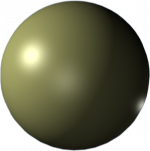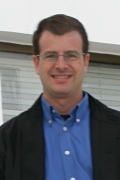Who has never been dreaming of the day where music (and culture in general) will become available to everyone? According to Valentin Villenave, a French composer and Free Software activist, this day is coming.
Although it was originally supposed to support creation and innovation, the so-called “author’s right” has been evolving for the past two centuries, and now leads to preposterous situations: for example, in every conservatory, unauthorized copies of music scores are hunted, driving both the students and the teachers crazy. Any edition that isn’t more than a century old may be regarded as “protected”: not only does it include highly contemporary authors such as Ravel or Satie, but most posthumous works by Chopin as well, or any decent Bach or Mozart edition. Moreover, it is forbidden to publicly play any “contemporary” piece (Ravel, Satie...). Many teachers commit atrocious (and potentially much expensive) crimes, by letting their pupils play the Pink Panther Theme in late June’s concerts. Even letting your children sing Happy Birthday at a party might put you at risk.
By making the copyright duration longer and longer, governments seem to be more interested in the business’ interests than in the authors’. Now only are current laws a huge pedagogical problem and a major financial concern for the families and conservatories, but they also represent a danger for Western democracies, by pushing them to monitor their citizens more and more closely. It is unavoidable: enforcing the copyright can only be done at the cost of reducing civil freedoms.

What can be done in this regard? One can try to act on a political level: the Pirate Party has recently entered the European Parliament. Or, one can try to act on a pedagogical level, towards the authors and artists: such is the purpose of Free licences
In the eighties, some programmers began to release their software by providing the user with some additional freedoms: freedom to copy and redistribute the program, freedom to change it to fix bugs or to adapt it accordingly to your needs... These freedoms are specified in a document that has to be attached to any copy of the program: the “license”. Thus, no matter the future improvements or forks, the software will remain Free (as in “freedom”), for all of its users and contributors.

The traditional, “proprietary” copyright demands that citizens give up some of their freedoms, by forbidding them to lend the software, etc. With the so-called “copyleft”, however, the author himself agrees to some compromises, and has the ability to chose exactly the amount of freedom he’s willing to give, by selecting one of the many existing Free licenses. Do I want the public to copy my work? Will I allow the public to modify my work? To sell it? And so on.
When it comes to computers, the benefits are countless: as everyone can fix their bugs and improve them, Free softwares like Firefox, OpenOffice, GNU/Linux are nowadays faster, more reliable than their counterparts — while remaining freely available. When it comes to culture, projects such as WikiSource, Gutenberg, Internet Archive or Wikipedia prove how solid and weighty the Free model is.
While many musicians ran away from the proprietary jails like rights-management organizations, and now happily put their songs online on a number of platforms, a proper solution has been lacking for written music.
Music publishing raises a few interesting issues. Decades ago, music scores were engraved by hand by masters, which explained their cost. Nowadays the engraving is done by computers; fabrication costs have greatly decreased (while the sale prices did not), as did unfortunately the engraving quality (pedagogical pieces, and French scores in general, are particularly awful-looking). The barlines are too regular, the stems are badly placed, the accidentals are roughly staked, the overall aspect is dull... Computer-engraved scores are deceiving compared to the work of human engravers.
In 1996, two Dutch students wrote a small program that aimed to imitate these masters’ work. It was clever, but limited, and the story could have ended there. But... they released this software under a Free licence. All over the world, enthusiast musicians and benevolent hackers adopted this project, each one bringing along ideas, suggestions and improvements. Today, LilyPond is the most complete and powerful music notation software. It runs on any platform, has thousands of users and hundreds of contributors, and makes it possible to write simple scores (a couple of hours is all it takes to get started) as well as complex 500-pages pieces, using text, graphic elements, contemporary or medieval notations.
A whole new perspective has appeared to make the culture Free. Where free music libraries such as imslp.org or cpdl.org may only scan 100-years old scores, without the ability to correct typographical mistakes or physical dilapidation, LilyPond allows musicians to edit, correct or adapt their own scores the way they want. For example, the Mutopia project hosts more than a thousand Free-licensed scores that you can download as PDF files as well as LilyPond code, making it possible to change an articulation mark, translate tempo indications or even arrange a piece for other instruments.

Teachers were so far forced to use “pirate” copies of Finale or Sibelius; now they have a Free and legal tool to make their own material: dictations with blank measures, transcriptions... LilyPond may even be distributed to your students for homeworks or team work. In Spain, a conservatory already has a whole LilyPond class.
I learned how to use LilyPond in 2006. I was 21 and writing my first opera (with a libretto by Lewis Trondheim, a famous French comic book author). I had already edited the first 200 pages with a “pirate” copy of Sibelius, when a major French opera house (the Opera National de Monpellier) got interested in my project. This gave me some kind of legitimacy, and therefore I decided to publish my own score, under a free license. No more publisher, rights-management organisation; it was some kind of a win-win deal. Most importantly, that also meant that my work could have a future: not only can it be downloaded and copied free of charge, but its source code can also be modified: arranging parts for a music school, translating the lyrics, even inventing a whole new (preferably better) work, isn’t so much allowed as encouraged. As the score’s license applied to any derivative work, it even makes it possible to “remix” an audio or video recording of the opera, as long as the singers, musicians, decorator etc. are regarded as co-authors and fully credited.
In the same way as you don’t own your children, an author does not detain any absolute and definitive truth about his work. Free licenses put the art in motion, as it was always supposed to be. Had the law been like it is today, no composer could have written anything in the 18th century: Bach wouldn’t have transcribed Vivaldi’s concertos, Telemann wouldn’t have published a piece, and Mozart would probably have ended up behind bars!
Today, citizens have a chance to reclaim art and knowledge. And I have to confess I am somehow proud that this chance is named with a French word: it is the Libre movement.
Valentin Villenave.
 [Le Site]
[Le Site] Free Music, Now!
Free Music, Now!